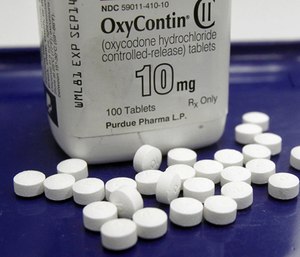Approximately 128 Americans die every day from opioid overdose. This includes prescription painkillers such as OxyContin, Hydrocodone, and Methadone. Of people who use heroin, about 80% of them first used a prescription opioid. This has led to the rise of a fatal opioid epidemic in the country.
In 2019 alone, more than 191 million opioid prescriptions were prescribed to Americans with pain. Between 21%- 29% of individuals who receive opioid medication for pain relief misuse it, while 12% of them develop dependence and opioid misuse disorder.
The opioid crisis has been going on for the last two decades, and its effects have been felt across the country.
But the big question is, how did it happen, and what really led to the crisis?
To understand things better, you have to look back to the late 1990s, and you will see Purdue Pharma and the Sackler family right at the center of everything.
The Starting Point
When OxyContin was first introduced to the U.S market, medical experts thought it was a miracle prescription. Patients with chronic pain had finally found something that could help them.
OxyContin is a form of OxyCodone, an opiate that is highly effective in relieving pain. What made OxyContin even more popular was its time-release mechanism that allowed patients only to use one pill every 12 hours.

However, what most of them didn’t know was that the opiate was highly addictive. Purdue Pharma failed to warn patients about the addictive nature of the drug leading to widespread addiction that cumulated into a public health crisis.
The drug manufacturer downplayed the risks associated with using OxyContin while aggressively marketing the pain pill. The result was a catastrophic opioid epidemic that started in 1996 and hasn’t slowed down up to date.
Understanding the Context of the Opioid Epidemic
In 1995, Purdue Pharma was about to release a brand new drug it had been fast-tracking to non-cancer patients with chronic pain. The drug’s name was OxyContin, and it had a specific time-release mechanism.
The entire medical community was excited, and patients hoped that the new medicine could finally help those with chronic pain. Upon release, doctors started prescribing it to their non-cancer patients to help manage pain symptoms.
On the other end, the drugmaker, owned by members of the Sackler family, used false claims in its marketing strategies and made billions of dollars in profits from the sales. Nobody knew what was coming.
Beginning 1996, a deadly opioid crisis started to sweep across the country, and subsequent research attributed it to an increase in OxyContin prescriptions. Although the time-release mechanism was supposed to make the drug less addictive, that wasn’t the case.
Some patients would mainline the pain pill by carefully extracting the oxycodone and use it without the time-release mechanism.
Dishonest Marketing Ploys
Over the past two decades, approximately 500,000 Americans have lost their lives to the opioid epidemic. The misleading information about OxyContin’s true addictive nature was Purdue Pharma’s greatest mistake.
The sad part is that the company even hired marketing experts to help spread the misleading information. McKinsey & Company was one of the consulting firms that encouraged Purdue Pharma to market OxyContin aggressively.

The drug manufacturer’s close ties with insurance companies and hospitals allowed for costly misinformation across the board. Some doctors were offered kickbacks for overprescribing OxyContin to their patients while downplaying its addictive nature.
McKinsey & Company even went ahead to endorse a renewed focus on high-dose pain pills which are highly dangerous and addictive.
Purdue Pharma pleaded guilty to a wide range of criminal charges, confessing that it had misled qualified doctors and other healthcare providers about OxyContin’s risks and had misrepresented its safety.
The Outlook of the Opioid Epidemic Today
Although thousands of opioid lawsuits have been filed, forcing Purdue Pharma to file for bankruptcy, it doesn’t mean the crisis is over.
The first wave of the public health crisis saw a significant increase in opioid addiction issues. This wave of opioid overdose and deaths stemmed from OxyContin’s over marketing and targeted influence.
However, the second and third waves of the crisis could be attributed to the drug’s scarcity. The second wave, which peaked in 2010, was mainly composed of heroin overdoses, possibly due to the scarcity of OxyContin in the market.

The third wave of the crisis, which began in 2013, has pushed victims to synthetic opiates such as fentanyl. The demand for illegally manufactured street fentanyl has been on the rise and poses a significant challenge to public health officials and law enforcement agencies.
However, a number of operations are underway which could help manage the crisis. In November last year, Purdue Pharma pleaded guilty to criminal charges and file for bankruptcy. The company has also proposed a $4.28 billion settlement deal to compensate victims.
The recouped funds will play a critical role in cushioning states and local governments from the economic losses suffered due to the epidemic. Individual victims will use their compensation amounts to fund treatment and rehabilitation programs.
The Bottom Line
Since the late 1990s, the United States has experienced one of the worst opioid crises in recent history. Almost everyone has felt the effects of the epidemic.
OxyContin played a significant role in fueling the crisis, and Purdue Pharma has paid dearly for its mistakes. However, there were other players in the cycle, too.
Drug distributors and other pharmaceutical companies have been sued for their role in fueling the crisis. Fortunately, there seems to be light at the end of the tunnel since a lot of action is taking place.
If you or your loved one fallen victim to the opioid crisis, you may have a valid claim. Talk to an experienced opioid lawsuit attorney today to find out if you are eligible for compensation.



